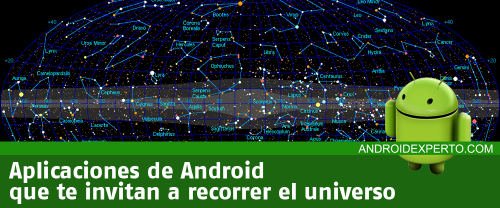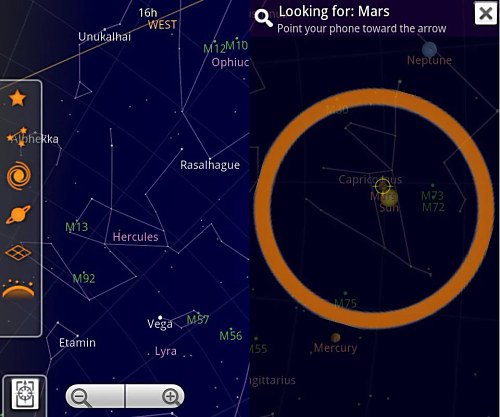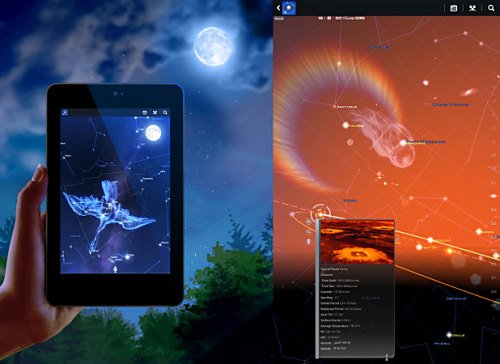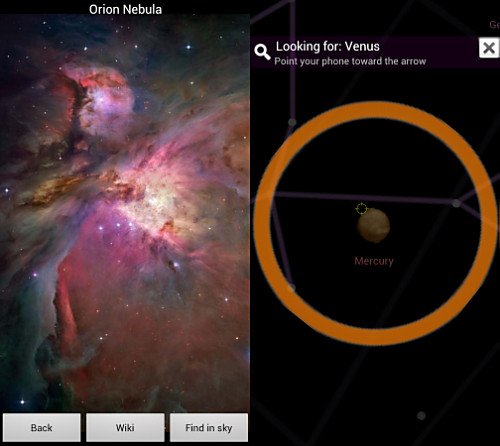Without a doubt, since the beginning of humanity, the universe that is beyond the reach of human sight has aroused the greatest concerns in history. Perhaps because of its unknown nature or because of its infinite greatness, but the truth is that space and the stellar world have always captured the attention of adults and children.
Many years ago, those who were interested in being able to visualize different stellar objects in an amateur way had to have a significant economic wealth to invest large sums of money in special devices that allowed to observe the sky and its qualities, which without a doubt was for some. few.

Today, thanks to technology applied to portable devices and the use of software platforms, such as Android, any of us has the door open to the universe, some of the applications created for it.
And precisely here we present the most outstanding tools for Android devices for viewing and locating celestial bodies, which through the use of the smartphone camera and GPS technology, which allows us to determine our current position, allows us to access astronomical information, such as knowing which are the stars and constellations that are above us at a precise moment.
Contents
Sky Map
Perhaps of its kind, it is one of the most used, and this is not by chance, since in reality Sky Map is a simple tool to use, even by the most novice in astronomy. Although for some it may be very elementary and modest, the truth is that it offers us various possibilities of use.
In addition, it is a totally free tool, which does not need large hardware requirements to function correctly, and offers information that is provided daily by Google, which also allows viewing the star maps with the PC, through the following link: HTTP: //www.sky-map.org/

Through Sky Map, the objects that appear in the sky are identified, according to the location in which we are at that moment, and in this way it allows us to search among the celestial bodies that are in that place. To do this, the application uses the compass, GPS, and clock tools, which also makes it possible for the star map to adjust when we move the device.
Among other things, Sky Map gives us the ability to identify stars and planets, zoom in, zoom out, and change multiple layers, including constellations, planets, and various deep sky objects. It also allows us to explore the cosmos just by sliding our fingers across the smartphone screen.
It is important to mention that to use Sky Map, the device must have Android version 1.5 or higher.
If you wish, you can download the application by clicking on this link.
Star map
Another free application that through the GPS of our mobile device, and pointing it towards the sky, allows us to know which are the celestial objects that are in that precise place where the smartphone or tablet as directed.
With Star Map, we can find constellations, stars, planets, and satellites, quickly and easily, through a 3D interface and in real-time, since the application allows us to accurately determine the current position of each of the visible stars and planets From the earth. The best thing is that it can also be used during the day, because as we well know, even if we don’t see them, the stars and planets are always there.

Among other things, the Star Map shows more than 5000 visible stars from both hemispheres, all the planets in the solar system, as well as the Sun and the Moon, the 88 constellations, and also allows you to find stellar objects through a list of categories. In addition, it offers us additional information about the celestial bodies just by placing our finger on a certain star or planet.
It should be noted that although it is a free application, which can be downloaded at this link, the truth is that there is also a paid version available with added functions, which you can find at this other link.
The Night Sky
Another option available on Google Play for Android devices that allows us to know a little more about our universe is The Night Sky, a free tool developed by Candi Apps, which, among other things, allows us to identify stars, planets, galaxies, and constellations that they are above us at a precise moment.

Like the rest of the applications, to find the celestial bodies we must point our smartphone or tablet towards the sky and The Night Sky will automatically show us the names of the stars, planets, and other objects that are there, even during the day or in cloudy night.
For its operation, the application makes use of the GPS and the compass integrated into the Android device since through establishing our location it searches for the celestial bodies that are in that position.
If you wish, you can download the application by clicking on this link.
Droid Sky View
Created by Space Zero-G and distributed for free on Google Play, the Droid Sky View application is an excellent option for those who wish to have a complete virtual star map available on their Android smartphone or tablet.
As with the rest of the applications presented in this article, we must point our device towards the place where we want to know what are the celestial bodies are at that moment at that precise moment. To do this, Droid Sky View uses the device’s GPS, and through the user’s location, it establishes the star map in real-time, even during the day.

In addition to showing stars, constellations, planets, and more, Droid Sky View includes Messier’s complete catalog, with maps of the deep sky and its objects. One of the great qualities of this application resides in its zoom function, which is really powerful, which allows us to visualize the sky in detail.
If you wish, you can download this application for free by clicking on this link.
conclusion
Although it is best to download and test each of these applications before choosing which one will be installed on our Android device, because ultimately each user has their own requirements, the truth is that we humbly consider that Sky Map is one of the more interesting alternatives, especially for novices in the world of astronomy, since due to its features it becomes one of the most user-friendly applications of its kind. It also consumes scarce system resources and allows access to extra information about each celestial body. In short, the decision of how to see the stars is now yours.